The Art of the Forest: A Painter’s View of the Wild

Share
There’s something ancient and sacred about the forest. For centuries, artists have stepped into the trees not just to observe, but to listen — to the rustle of leaves, the dance of shadows, the hush of mystery. In every brushstroke, they’ve captured more than landscapes. They’ve captured spirit.
This series explores how ten visionary artists saw the forest: not just as scenery, but as sanctuary, memory, dream, and even rebellion. From Gustav Klimt’s golden woodlands to Chiho Aoshima’s surreal nature realms, each artist painted a different truth among the trees.
Welcome to The Art of the Forest — where canvas becomes canopy, and art walks among the wild.
Gustav Klimt (1862–1918)— Beech Grove I
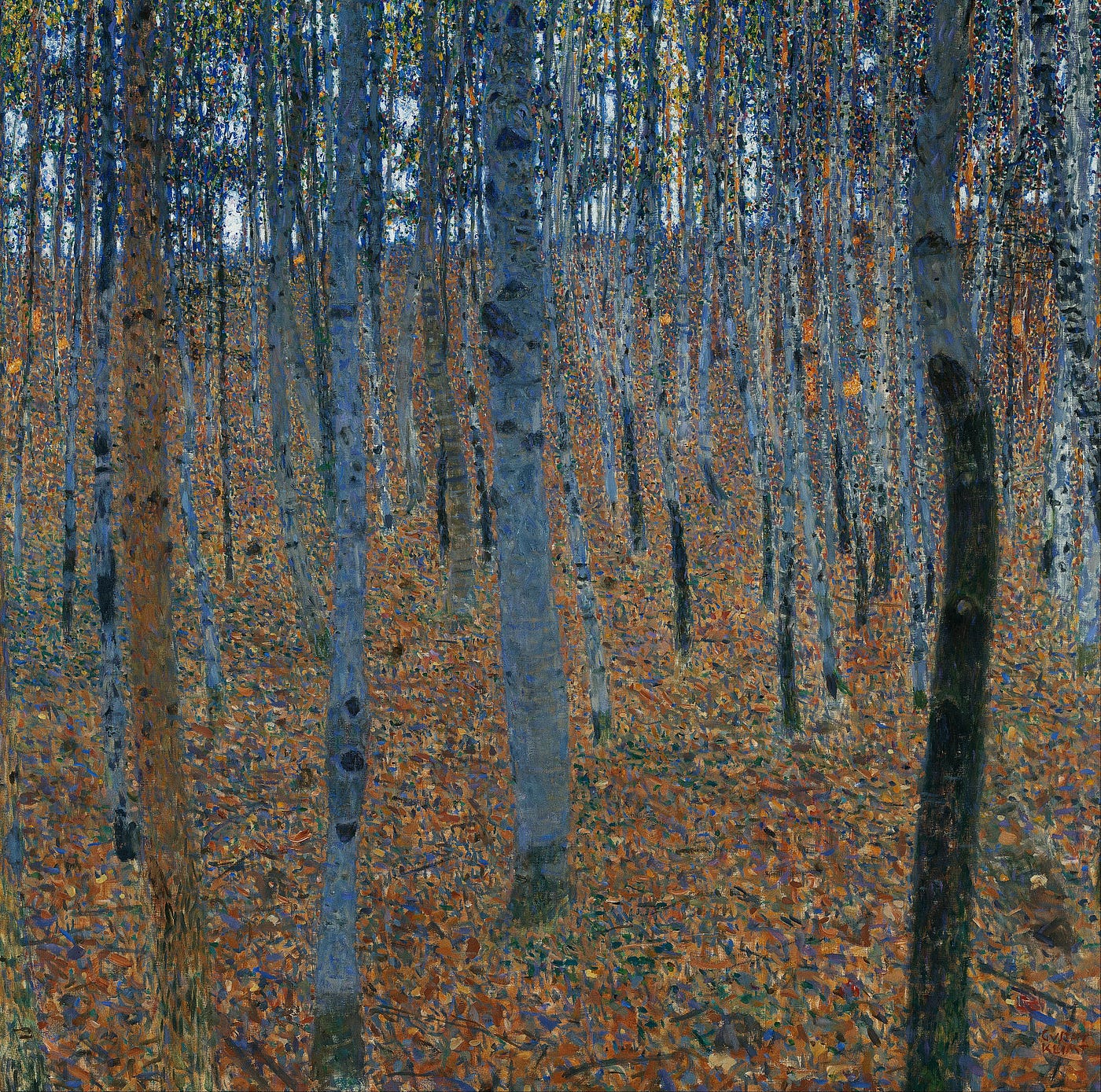
Katsushika Hokusai’s art, ‘Fuji View Field in Owari Province’
While Hokusai is best known for his towering waves and iconic depictions of Mount Fuji, his relationship with nature extended deep into the forests of Japan. In works like Fuji Seen from the Woods in Owari Province, trees are more than background — they are sacred sentinels, framing the divine presence of the mountain. Hokusai captured the quiet reverence of forested spaces, where branches bend like brushstrokes and nature becomes a spiritual bridge between earth and sky. His art reminds us that in the heart of Japan’s forests, silence speaks volumes.
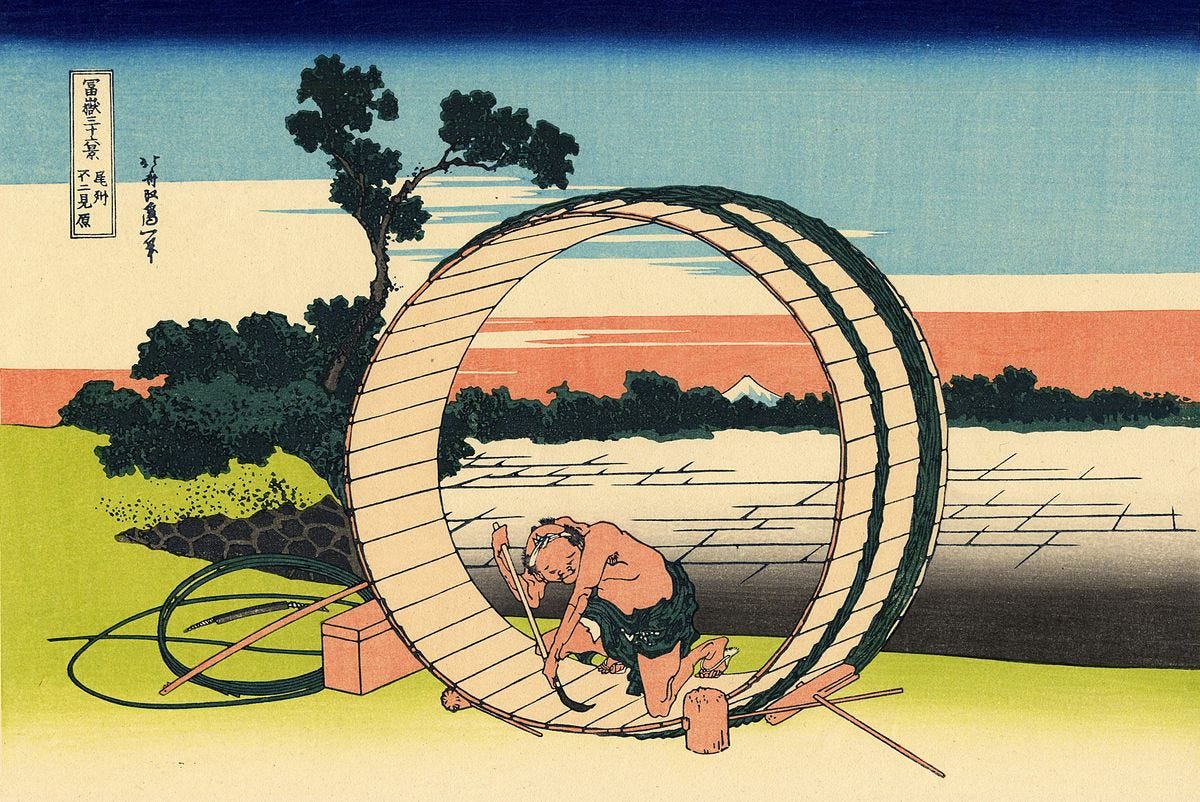
David Hockney. The Woldgate Woods landscape.
The Woldgate Woods landscape depicts trees near Bridlington, East Yorkshire. The piece, measuring 10.5ft (3m) wide, is made up of six individual canvases.
In Woldgate Woods, David Hockney invites us into a forest that pulses with color, rhythm, and life. Inspired by the English countryside of East Yorkshire, his trees aren’t passive elements — they’re alive, almost dancing, shifting with the seasons and light. Using iPads, bright acrylics, and layered perspectives, Hockney reimagines the forest not as a still life, but as a sensory experience. His woods breathe, bloom, and stretch across time, reminding us that the forest is not static — it evolves, and so does the way we see it.
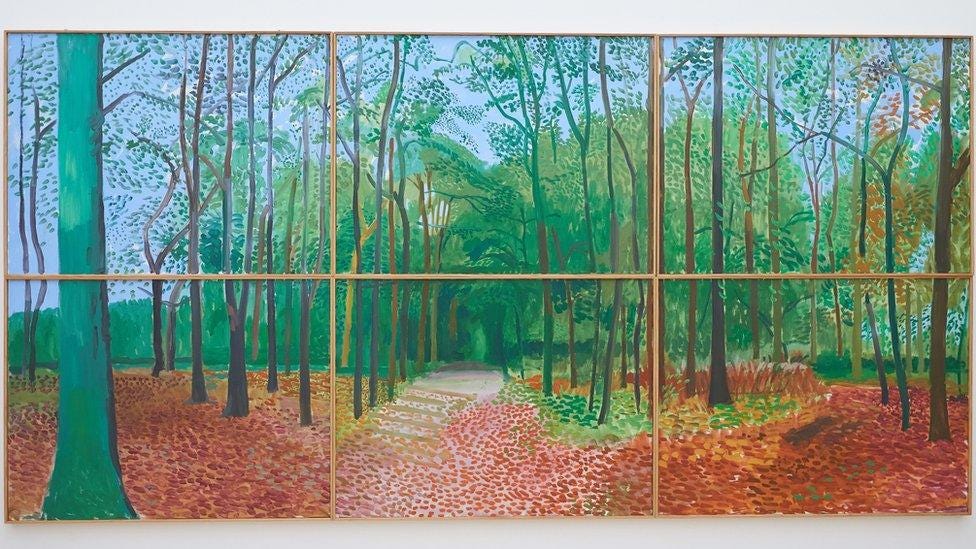
Emily Carr — Forest British Columbia Series
Emily Carr (December 13, 1871 — March 2, 1945) was a Canadian artist who was inspired by the monumental art and villages of the First Nations and the landscapes of British Columbia
For Emily Carr, the forests of British Columbia were more than a landscape — they were a sacred presence, ancient and full of voice. Her brush moved through cedar groves and towering pines with reverence, often drawing inspiration from Indigenous cultures and their spiritual connection to the land. In her forest series, trees twist and lean with emotion, like elders whispering their stories through the wind. Carr didn’t just paint what she saw — she painted what she felt. Her art captures the soul of the forest as a living entity, wild yet deeply knowing.
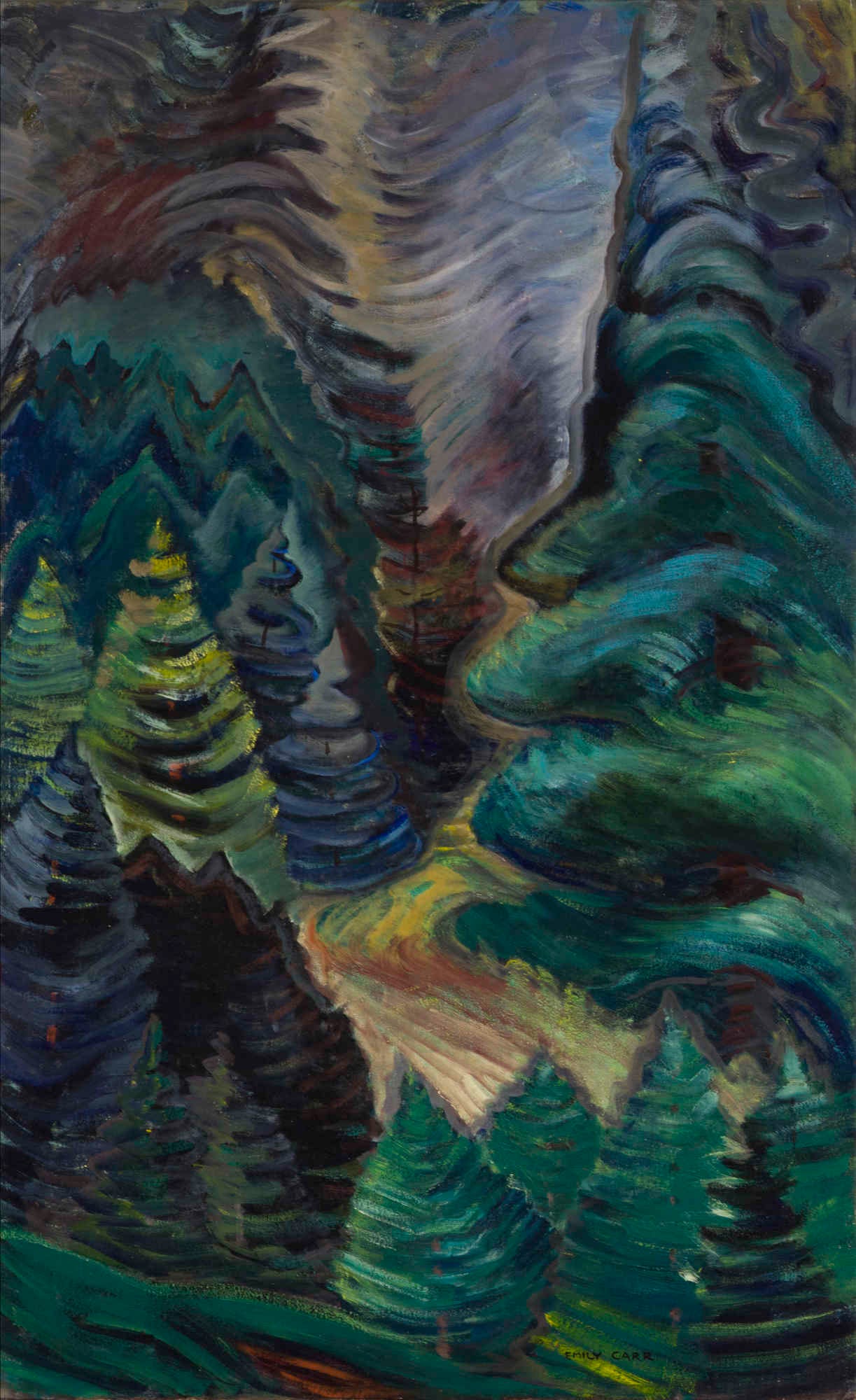
Pierre Bonnard. Paysage près de Giverny (1922), Aberdeen Art Gallery
In Paysage près de Giverny, Pierre Bonnard invites us into a forest softened by memory and light. His view of nature is not literal but emotional — colors blur, trees melt into each other, and space feels like a dream half-remembered. Influenced by the intimacy of impressionism and the vibrant hues of post-impressionism, Bonnard painted forests not as wilderness but as personal refuge. In his hands, the forest becomes a quiet reverie, a place where the boundaries between earth, light, and feeling dissolve into color.
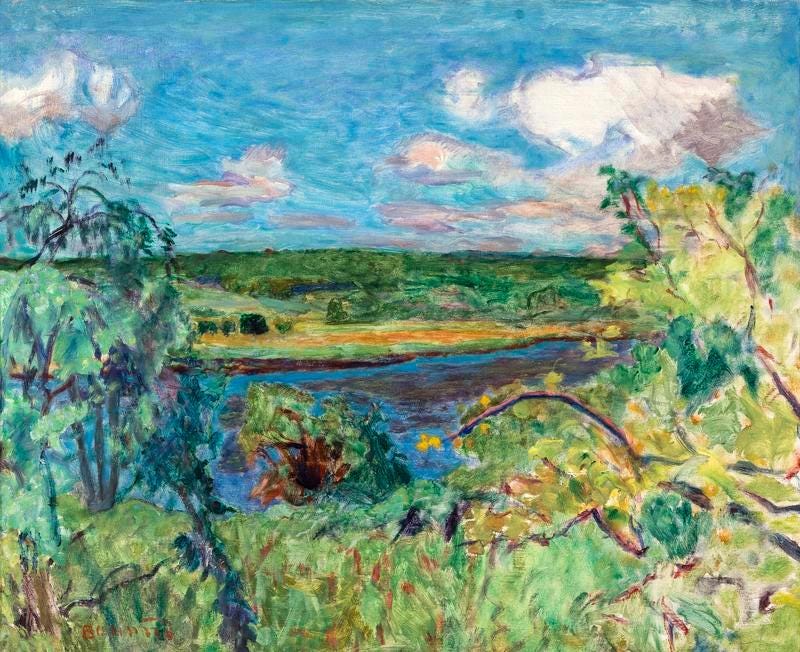
Anselm Kiefer — Forest Interiors
In Forest Interiors, Anselm Kiefer leads us into a forest heavy with history, memory, and myth. His trees are not peaceful — they are scorched, layered, and tangled with the weight of time. Using materials like lead, ash, and straw, Kiefer’s canvases feel like relics unearthed from the aftermath of war. The forest, in his work, is not only a place of nature but a theater of trauma and regeneration. In these dark groves, we sense the echoes of the past and the stubborn persistence of life. His forests don’t just speak — they mourn, remember, and endure.
Yayoi Kusama — Infinity Nets and Nature Installations — Though known for dots, Kusama’s early works were inspired by forests in Matsumoto, full of repetition and madness.
Before the dots took over, there were trees — dense, patterned, and overwhelming. Growing up in Matsumoto, Yayoi Kusama found both beauty and terror in the forests around her. That early sensory overload would shape her artistic language for decades. In her Infinity Nets and nature-based installations, repetition becomes ritual, echoing the dizzying layers of leaves, branches, and shadows. Her forests aren’t traditional landscapes — they are psychological spaces, where nature meets obsession. Through her eyes, the forest becomes infinite: a place where form dissolves, and the mind is set adrift.

Peter Doig — Echo Lake, Forest Scenes
Doig paints memory and dream, and his misty, layered forests are haunted with nostalgia.
In works like Echo Lake, Peter Doig paints forests not as places, but as memories — misty, elusive, and half-forgotten. His trees stand like sentinels in a dream, blurred by fog and silence, soaked in nostalgia. Doig’s forests feel cinematic, drawn from personal recollection and flickering film stills, where reality slips into myth. There’s always something just out of view, a story untold, a figure half-seen. Through his brush, the forest becomes a stage for memory and longing — unfixed, haunting, and profoundly human.

Caspar David Friedrich — The Chasseur in the Forest
A romantic view of man dwarfed by nature, filled with solitude and philosophical depth.
In The Chasseur in the Forest, Caspar David Friedrich turns the forest into a vast, spiritual abyss. A lone figure — tiny, vulnerable — steps into a cathedral of towering, snow-covered trees. Here, the forest isn’t just scenery; it’s a meditation on existence. Friedrich’s romantic vision frames nature as sublime and humbling, a space where the self dissolves into something greater. His trees are solemn and still, heavy with silence, inviting the viewer into a moment of awe, solitude, and surrender. In his hands, the forest becomes a question whispered in white.
